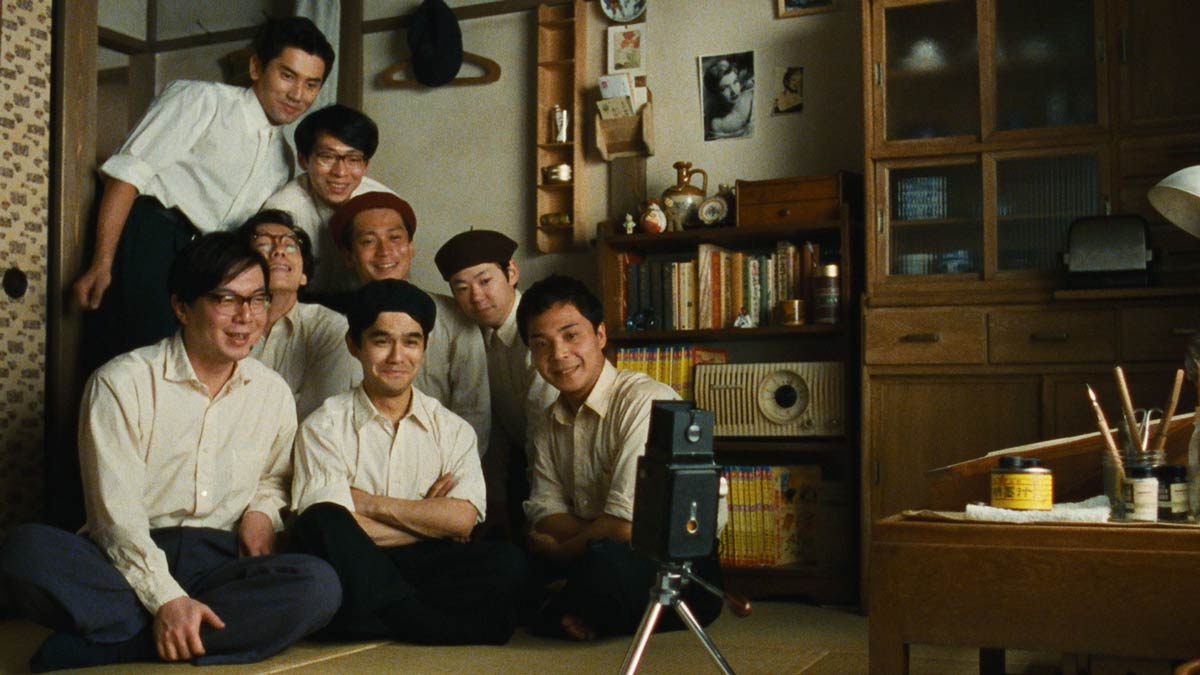
©1995/2020 Culture Entertainment Co., Ltd
"Tokiwa-so's Youth" The light and shadow of young manga artists drawn in a legendary apartment (Part 1/Planning part)
2021.02.12
“Tokiwa-so's Youth” synopsis
Tokiwaso is a wooden apartment building located in Toshima Ward, Tokyo. Osamu Tezuka (Sou Kitamura), the ``God of Manga'', lived there, and editors visited him day and night. Hiroo Terada (Masahiro Motoki), who lives in the room across the street, watches the situation and continues to diligently bring the book to the publisher. Eventually, young aspiring manga artists move in one after another, replacing Osamu Tezuka who left Tokiwa-sou. Hiroshi Fujimoto/Fujiko F. Fujio (Abe Sadao), Motoo Abiko/Fujiko FujioⒶ (Takuji Suzuki), Shotaro Ishimori (Koji Sato), Fujio Akatsuka (Yoshiyuki Omori), Naoya Moriyasu (Arata Furuta), Shinichi Suzuki (Katsuhisa Namase). Jiro Tsunoda (Kaei Okina), who lives nearby, also frequents Tokiwa-so. They were all contributors to ``Manga Shonen,'' and formed the ``New Manga Party'' with Terada at the center. Despite living in poverty, they spend their days encouraging each other and passionately talking about the future of manga. Terada, the eldest among them, quietly watches over the young boys as a kind of older brother, and his gaze also falls on Yoshiharu Tsuge (Ryota Tsuchiya), a friend of Akatsuka's whose style is completely different from his own. One day, Gakudosha, the publisher of Manga Shonen, suddenly goes bankrupt. Taking this opportunity, the paths that the eight friends take gradually change. Someone who is becoming more and more popular. A person who decides to transition from manga to animation. Some of them even left Tokyo. Terada, who seemed to be silently pursuing only the manga he wanted to draw without being swayed by trends, gradually began to feel lost. With the rapid changes of the times, the days of youth for aspiring manga artists are slowly drawing to a close.
Tokiwa-so has been restored. From the late 1950s to the mid-1950s, Toshima, Tokyo, was where many famous manga artists, starting with Osamu Tezuka, Hiroo Terada, Fujiko F. Fujio, Fujiko Fujio A, Fujio Akatsuka, and Shotaro Ishinomori, lived in their youth. An apartment building located in Shiinamachi 5-chome (at the time) was rebuilt as the Toshima Ward Tokiwaso Manga Museum.
However, restoring a nondescript mortar apartment near where it actually stood is quite a perverse endeavor. It looks like a reconstruction castle tower or a mock castle tower that was built in the mid-Showa era to be a tourist attraction in various places, but it is said that manga artists who later became famous lived under the same roof in their young and anonymous years. True stories have a timeless and universal appeal. Moreover, this restoration was probably made possible because the name Tokiwaso itself became widely known to the general public.
Following the opening of the Tokiwaso Manga Museum, director Jun Ichikawa's ``Tokiwa-so's Youth'' (1996) was revived and screened in a digitally remastered version for the first time in 25 years (as of February 2021). Tokiwaso, which has appeared in manga, animation, documentaries, and TV dramas, is so far the only time it has appeared in a feature film.
“Tokiwa-so's Youth” preview
This article is approximately 22,000 characters long and is divided into two parts: the first part (planning part) and the second part (shooting part). Before we get into the movie, let's start with the beginning of the Tokiwaso Myth.
Index
- How was the Tokiwaso myth born?
- What did the up-and-coming commercial director see in Tokiwaso?
- The reason why a manga artist lived in Tokiwaso
- Selected residents
- Light and shadow of manga artist Hiroo Terada

